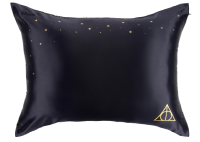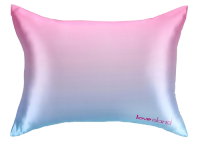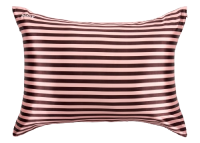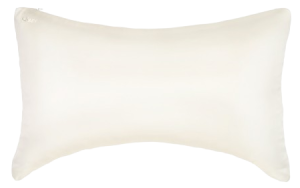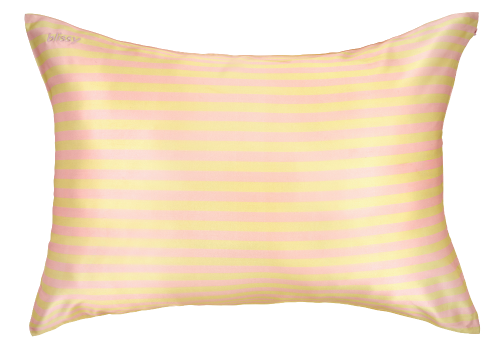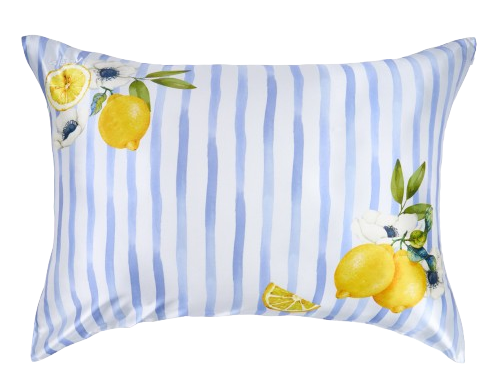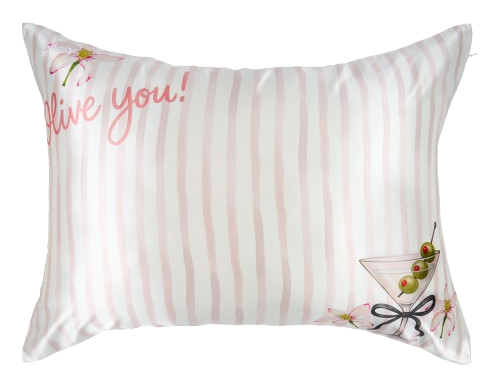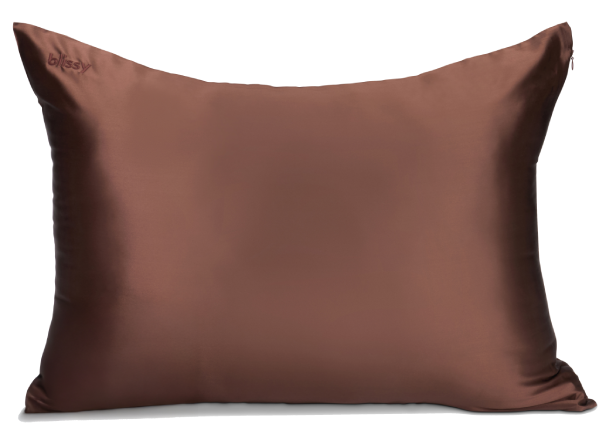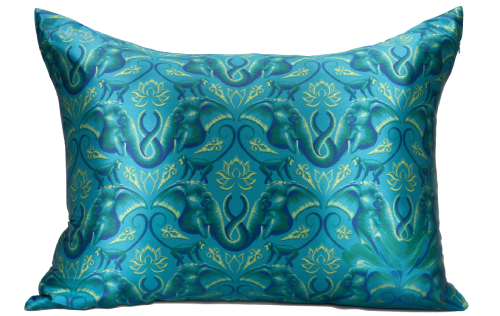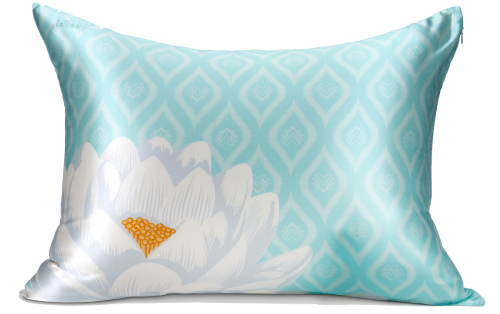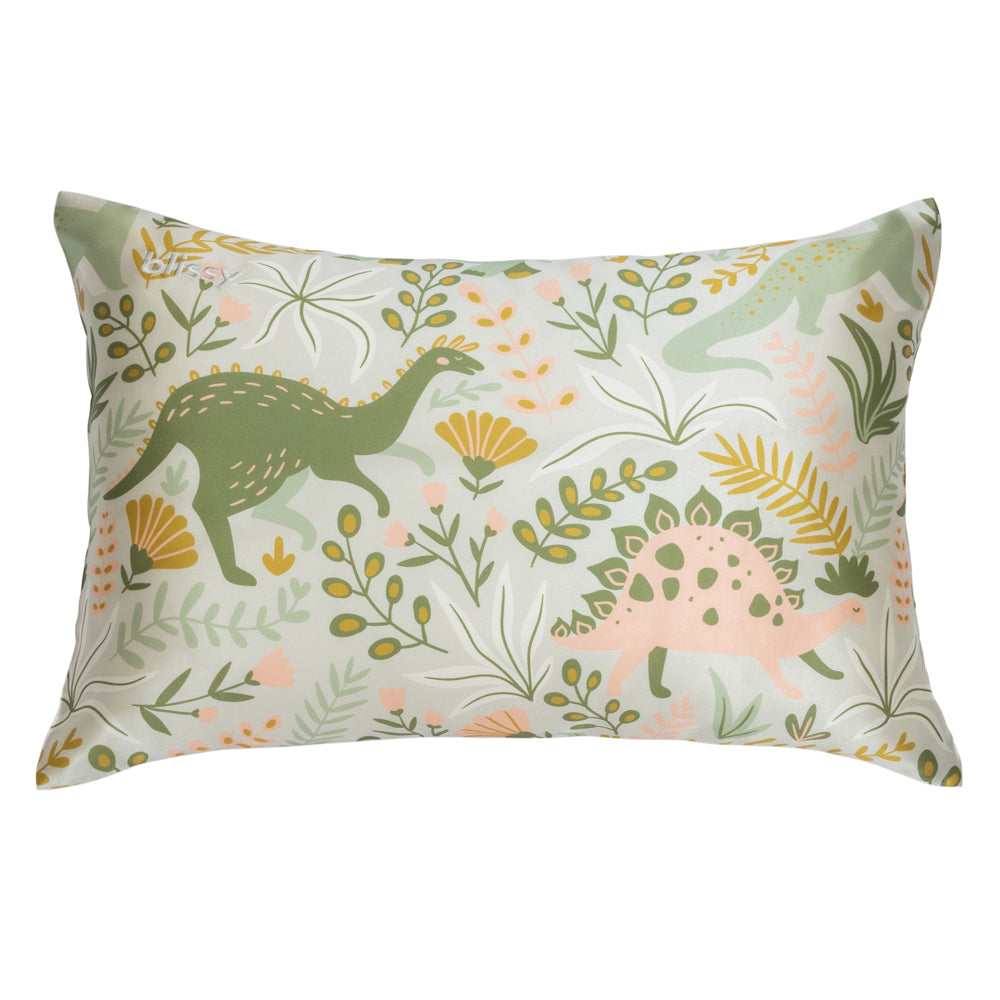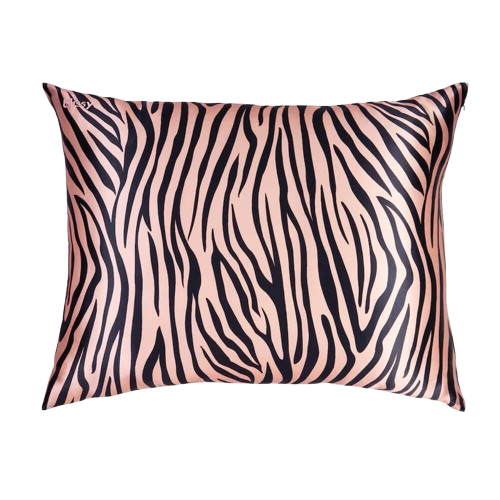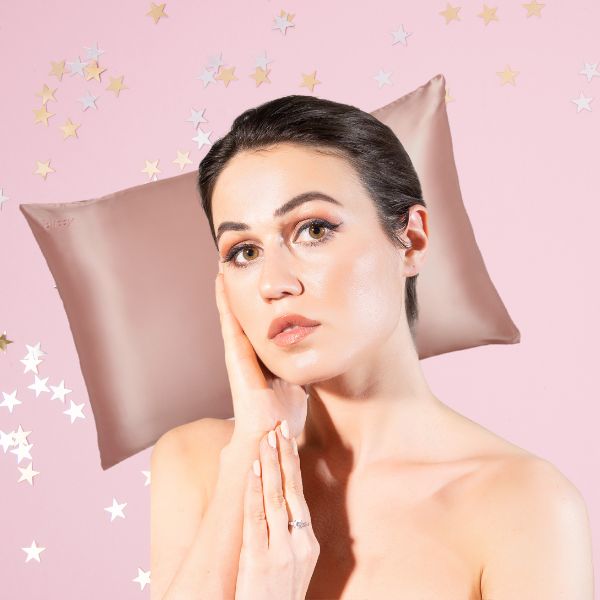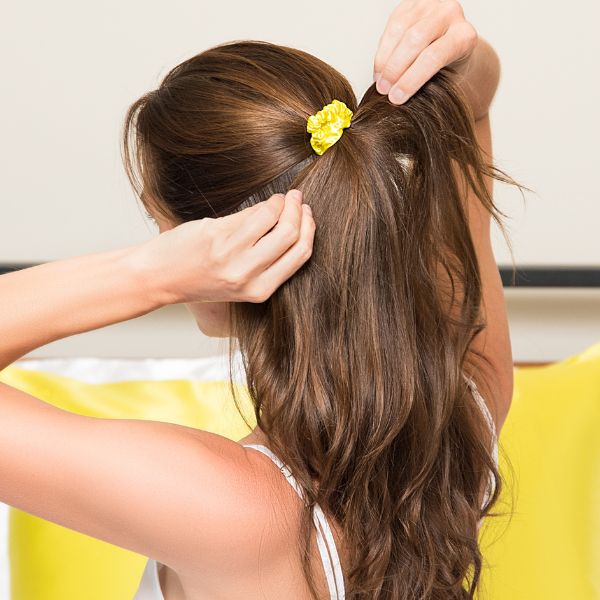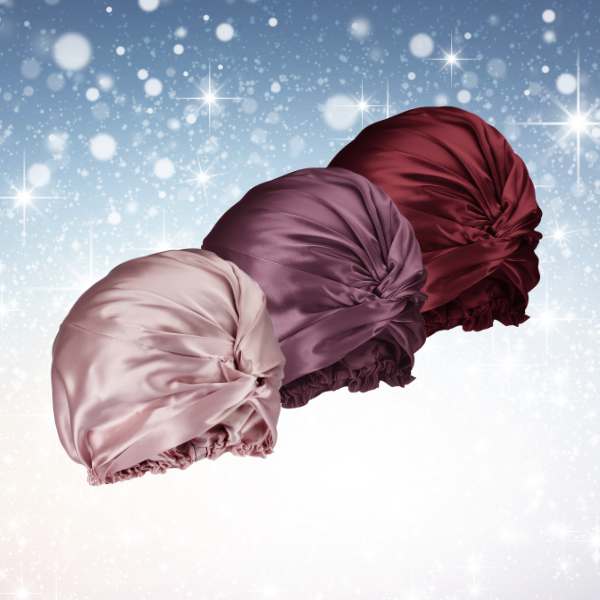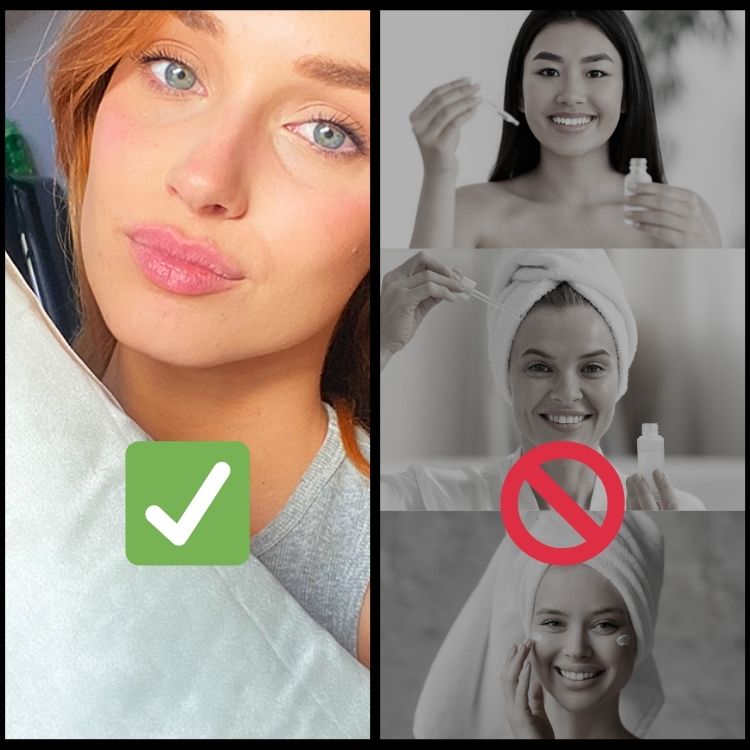Key Takeaways:
-
Silk pillowcases are best for acne-prone skin—they’re smooth and hypoallergenic.
-
Satin pillowcases often trap oil and bacteria, worsening acne.
-
Pick 22-momme mulberry silk for softness, strength, and skin benefits.
-
Wash weekly in cold water to keep your pillowcase skin-safe.
If you’re constantly waking up with new breakouts, your pillowcase might be part of the problem.
For clear, glowing skin, we have put together information on the best pillowcases for acne breakouts, so you can choose the right go-to pillowcase for your skin health.
Continue reading to find out more about how silk, cotton, polyester, satin, and bamboo pillowcases differ.
Choosing Silk Pillowcases or Satin Pillowcases: What's the Difference?
The best pillowcases for acne-prone skin reduce the risk of breakouts by minimizing the collection of dirt and debris.
A silk pillowcase and satin pillowcase might look the same, but they are made from different materials.

The Truth About Satin Pillowcases
Satin is sometimes hailed as one of the best pillowcases for acne, but that's generally because of a misunderstanding between satin and silk.
Satin refers to the weaving process, not the material used for the weaving. It's possible that a satin pillowcase could actually be a cotton pillowcase, for example, but its sheen makes it appear "like satin."
Satin Materials: What Is Satin Made Of?
There are several materials that tend to be woven into satin designs, many of which are synthetic and may cause the collection of skin cells and oil from oily skin. They include:
- Polyester
- Cotton
- Acetate
- Rayon
To sleep comfortably, you need to know exactly what material you're sleeping on. It's completely possible that the polyester satin pillowcases you have are harming your skin while you believe that the satin weaving is enough to offset the texture (unfortunately, it isn't).
Your go-to anti-pimple pillowcase should provide real benefits to you, not damage your hair and skin.
The Truth About Silk: Where Does Silk Come From?
A pure mulberry silk pillowcase is different, because of the luxurious all-natural silk it's made from. Silk refers to the material, not the weave.
Pure mulberry silk is made by silkworms. Silkworms create soft, beautiful threads that are woven together to create naturally antibacterial silk fabric that helps to minimize acne breakouts by resisting dirt and debris in its fibers.
Silk has several qualities that make it superior for skin, especially if you suffer from breakouts. Silk is:
Silk also helps wick away moisture while limiting the risk of dust mites and natural oils from gathering in the material.

Caring for your silk
Silk is a little more complex in terms of care. You can opt to machine wash your silk pillowcases on the gentle cycle or delicate cycle in cold water with pH-balanced detergent (like Blissy Wash). But it is recommended to air dry them rather than tumble dry them.
Remember, this is a natural material that should have a weekly wash for all the benefits you expect in a go-to pillowcase.
Natural silk pillowcases offer a clean surface that can be washed easily before you put them out to hang dry.
What About Cotton or Polyester Pillowcases?

You might have cotton pillowcases or polyester pillowcases at home. Both of these are rougher materials than silk pillowcase fabrics, making it more likely for you to see damage to your hair and the emergence of cystic acne.
For this reason alone, a cotton pillowcase or polyester pillowcase usually aren't the best pillowcases for acne or sensitive skin.
All pillowcases need regular washing and should be made free from harmful chemicals in the fabric, but you can't always guarantee the quality of materials, especially when they're synthetic.
Are Bamboo Pillowcases Good Quality?

Bamboo pillowcases are also breathable and hypoallergenic, just like silk. Silk pillowcases are softer than bamboo pillowcases and have a long history of being used for bedding, whereas bamboo pillowcases are relatively new.
Bamboo pillowcases, like silk, can be washed in a washing machine. Both are also hypoallergenic, antibacterial, antifungal, and less likely to cause your skin to break out than cotton or synthetic blends.
That being said, one of the main differences between silk and bamboo fibers is the texture. While bamboo may get softer over time the more you use and wash it, it's never going to feel as soft and silky as mulberry silk.
If you're looking for soft and luxurious material with an unparalleled sheen, silk is your best bet.
Pillowcase Material Comparison for Acne-Prone Skin

|
Material |
Acne-Friendly? |
Pros |
Cons |
Verdict for Acne |
|---|---|---|---|---|
|
Silk |
✅ Yes |
Natural, antibacterial, hypoallergenic, breathable, moisture-wicking |
Higher cost, delicate care required |
⭐ Best option |
|
Satin |
⚠️ Varies |
Smooth texture, less friction than cotton |
Often synthetic (polyester/rayon), traps oil/bacteria |
❌ Not recommended |
|
Cotton |
🚫 No |
Affordable, breathable |
Rough texture, absorbs oil, can irritate acne-prone skin |
🚫 Avoid |
|
Polyester |
🚫 No |
Durable, inexpensive |
Synthetic, non-breathable, traps heat, oil, and bacteria |
🚫 Avoid |
|
Bamboo |
⚠️ Maybe |
Hypoallergenic, breathable, antibacterial |
Less smooth than silk, newer/less studied for acne |
👍 Decent backup |
Which Material Is Best for Acne? Silk Wins ✅
Dermatologists recommend silk pillowcases as the best option for acne-prone skin because they reduce friction and help keep bacteria and oil from building up.
There are a few things to look for in a quality silk pillowcase that's going to become your go-to pillowcase every night.

Why Silk Pillowcases Are Best for Acne-Prone Skin
When it comes to choosing the best pillowcase for acne, texture matters. Rough fabrics like cotton or low-grade synthetics can tug at your skin while you sleep, creating irritation that contributes to acne breakouts. That’s where silk pillowcases shine.
Less Friction = Fewer Breakouts
One of the biggest reasons dermatologists recommend silk—especially mulberry silk pillowcases—is because of how smooth and soft the material is.
Unlike cotton or satin pillowcases made from synthetic blends, silk has a friction-free surface that gently glides across your skin.
That means less pulling, fewer pillow lines, and reduced chance of acne flare-ups caused by irritation.
Breathable and Temperature-Regulating
Silk isn’t just soft—it’s also naturally breathable, helping regulate heat and humidity while you sleep. This is key for acne-prone skin, since trapped sweat and oil can clog pores overnight.
A real mulberry silk pillowcase allows airflow to circulate, keeping your skin cool, calm, and less reactive.
High-Quality Fabric That’s Built to Last
Not all pillowcase materials are created equal. While satin often refers to a weave, not a fabric, many satin pillowcases are made from polyester or acetate—materials that aren’t ideal for sensitive skin.
In contrast, 100% mulberry silk is a natural fiber with proven skin benefits and a luxurious feel. It’s the gold standard when it comes to silk pillowcases—and yes, it’s worth the upgrade.
Care and Details That Make a Difference
Quality silk pillow cases are easier to care for than you might think. Most can be machine washed in cold water on a gentle cycle, though hand washing is also an option if you want to prolong the life of the fabric.
Always use a pH-balanced detergent, and air dry instead of tumble drying to protect the fibers.
Choosing the Best Pillowcase for Acne-Prone Skin

When shopping for the best pillowcase for acne, choose a silk pillowcase. This is because it's hypoallergenic, antimicrobial, breathable, and moisture-wicking. It's also naturally hydrating, so it will fight signs of aging too. It's like heaven for your skin!
And remember—satin pillowcases are not the same as silk pillowcases. Satin is a synthetic material that is not hypoallergenic, antimicrobial, breathable, or moisture-wicking while silk is.
But with so many silk pillowcase brands on the market, how do you know which one to get? Here's a list of things to look for in the best silk pillowcases.
Select Quality Silk Pillowcases Endorsed by Dermatologists
Look for a mulberry silk pillowcase with 22-momme weight fabric—that’s the sweet spot for softness, durability, and everyday luxury. For best results, choose a brand backed by real experts. As Dr. Aleksandra Brown, MD, a board-certified dermatologist, puts it:
“That’s why I recommend Blissy—the only dermatologist-backed, clinically-studied silk pillowcase, with 90% of users reporting clearer skin and improved skin health.”Dermatologist Quotes
When choosing the best pillowcases for acne, expert validation matters. A brand that’s been clinically studied and dermatologist-recommended—like Blissy—isn’t just a luxury upgrade. It’s a skin-smart decision.
Choose Durable, Machine Washable Silk Pillowcases

Your anti-acne silk pillowcase needs to be made with a top-quality grade 6a, 22-momme 100% mulberry silk—this is the strongest, best type of silk. It should also be machine washable so that it's easy to keep clean.
Even though natural fiber silk pillowcases, like those sold by Blissy, are naturally antibacterial, this doesn't mean they won't get dirty!
If you have acne-prone skin, change your pillowcase once per week for best results and wash them regularly. Avoid satin pillowcases.
Tip: Use a delicate detergent that's safe for sensitive skin (like Blissy Wash) and gentle cycle when washing your silk pillowcase.
For more tips on keeping your silk pillowcases clean, click here.
Opt for a Zippered Closure Pillowcase
Look for a silk pillow case with a hidden zipper, so you reduce the likelihood of your pillow slipping out and your bare skin making contact with your unwashed pillow.
A hidden zipper pillowcase also allows you to use both sides of your pillowcase equally, which will help your skin stay clean and clear.

Ensure Your Silk Pillowcase Is Free From Harmful, Irritating Chemicals
You want to be sure there are no harmful chemicals that could damage your skin—so look out for the OEKO-TEX Standard 100 Label. Also ensure you choose a silk pillowcase brand like Blissy that has been clinically tested and proven hypoallergenic, so it won't irritate your skin or cause more acne.
Oeko-Tex® Certified Pillowcases
Oeko-Tex® certified pillowcases are tested for harmful substances and made with skin-safe, eco-friendly materials. Whether you prefer silk or satin pillowcases, this label ensures your pillow is safe for nightly use.
Reducing Acne Breakouts Starts With Smarter Sleep Choices

If you have acne-prone skin, you've probably already tried countless skincare products. But one thing many people overlook? Their pillowcase. The fabric you sleep on every night can either support your skin health—or silently sabotage it.
The Importance of Sleep for Clear Skin
Clear skin starts with quality sleep. While you rest, your body produces collagen and elastin, which help improve texture and reduce fine lines.
Sleep also lowers stress—one of the biggest triggers for acne breakouts. Pairing 7–8 hours of sleep with a smooth pillowcase like silk or Oeko-Tex certified satin gives your skin the best chance to repair overnight.
Why Your Pillowcase Matters for Acne
When your cheek is pressed against a pillow for 6–8 hours a night, any rough texture, built-up oil, or hidden bacteria can trigger acne breakouts. Traditional fabrics like cotton or low-grade satin pillowcases (especially those made from synthetic materials in a satin weave) can absorb your skincare, trap dirt, and create friction that irritates acne-prone skin.
Less Irritation with the Right Pillowcase
If you have sensitive or acne-prone skin, your pillowcase matters. Rough materials like cotton or polyester can cause friction, leading to irritation and breakouts.
Silk pillowcases are naturally hypoallergenic, ultra-smooth, and gentle on both skin and hair. Even some satin pillowcases can be gentler—just check the fabric content.
For best results, keep your pillow cases clean and soft. Hand wash or use a delicate cycle to protect the fibers.
Silk Is the Skin-Friendly Swap
Unlike harsh or absorbent materials, silk pillowcases offer a soft, smooth surface that minimizes tugging and irritation. They don’t soak up moisture the way cotton or cheap satin can, so your products stay on your skin, not in your pillowcase. That means less inflammation and fewer breakouts—especially for those with sensitive or acne-prone skin.
Cleanliness Counts
Even the best pillowcases need regular care to stay effective. For acne-prone individuals, keeping your pillowcase clean is non-negotiable. Be sure to wash it at least once a week—ideally in cold water with a mild, pH-balanced detergent.
You can either machine wash on a gentle cycle or hand wash to preserve the delicate fibers of the silk fabric. Skip the bleach and high heat: they can break down the weave and irritate your skin.
Get a Good Night's Sleep with Silk Pillowcases for Acne Prone Skin
At Blissy, we have the mulberry silk pillowcase you're looking for. We have the best pillowcases for acne-prone skin in the cutest colors and designs. We offer colored pillowcases, white pillowcases, and others that will help you get your beauty sleep while keeping with the theme of your room.
A luxurious silk pillowcase will leave you completely satisfied as you protect your skin against acne-causing bacteria and rough textures. You can find all our best silk pillowcases with 22-momme weight here in our online shop.


